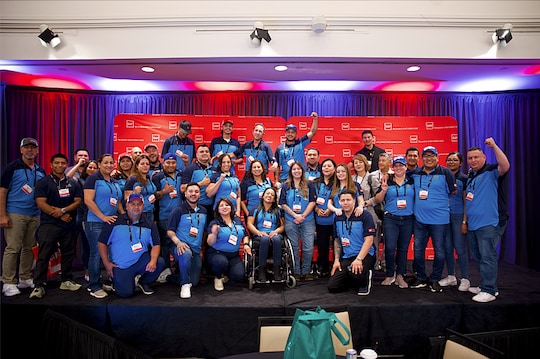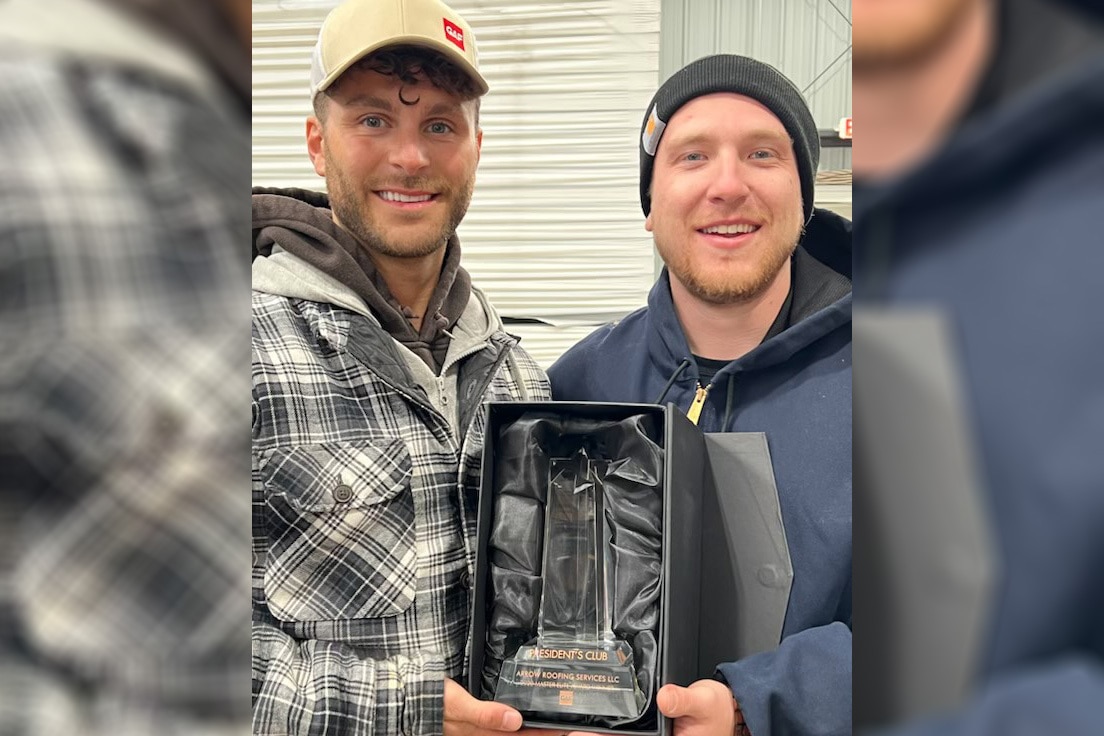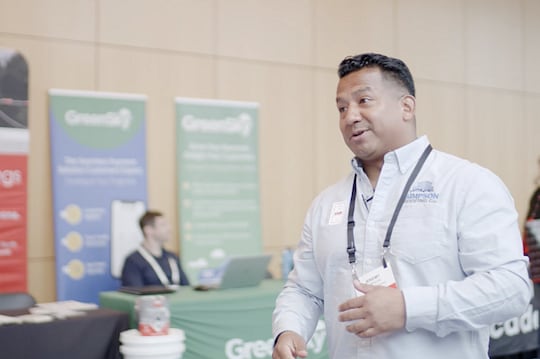
En tu comunidad
Armamos redes de contactos en la cumbre Latinos In Roofing 2024 de GAF
For the past several years, GAF has hosted the Latinos In Roofing Summit & Expo to acknowledge, celebrate, and empower Latino roofing contractors and installers. The event provides networking opportunities, education, and training-presented entirely in Spanish-in a comfortable, welcoming atmosphere.Now in its third year, the summit has become a trusted resource for the Spanish-speaking contractor community to gain insights into how to better run and grow their roofing businesses. Educational sessions cover topics essential for business success, such as sales, insurance restoration work, commercial roofing, leadership, marketing, and roofing products.The first Latinos In Roofing Expo of 2024 was held on June 22nd in Los Angeles, and hundreds of industry professionals attended. With an emphasis on fostering community, the event featured a range of activities, including a pre-reception networking session and the chance to attend an LA Dodgers game with their new connections.Here's a look at what the event offered attendees and the experiences they shared.Breaking through Language BarriersAlan Lopez, GAF CARE trainer, explains that Latinos In Roofing events were developed when he noticed more Hispanic contractors attending GAF events conducted in English. For many of them, English was a second language, so it was harder to learn and take in all the information, some of which was lost in translation. Lopez reached out to his leadership at GAF, and they were eager to offer resources for Latino contractors, hosting the first expo in 2019.Abad Sarate, CEO of Asa Pro Roofing in Seattle, Washington, credits the conference being conducted entirely in Spanish as critical to successfully learning and understanding the information presented. "For us, it is very important to understand it in our main language, it is essential," he says. "And to have this type of conference for many Latino contractors fills us with pride." He continues, "I see more and more Latinos owning roofing companies, and the truth is that I am very happy-it makes me very proud as a Latino too."Luis Velasquez from Entrenando Latinos In Roofing agrees that the summit presented in Spanish was important to attendees' success. "We Latinos, who are first generation, who did not go through school, who come from poor countries, have a conflict and that is that we do not understand 100% English, we are not fully bilingual," he said. "So, when we manage to understand what is going on and how we can put it into practice, it is a complete gain. When we put knowledge in our head, the head will put money in our pockets."Creating an Annual Tradition for Roofing ProfessionalsGaining knowledge for business success was a key theme at this year's event. The informational sessions, keynote lectures, and demonstrations enabled attendees to learn about new products and gain new skills while connecting with other Latinos in the roofing industry. Many attendees were repeat visitors, demonstrating the value the event provides.Sarate is a two-time attendee and explains that the annual gathering has been instrumental in his company's development. "It has been an exceptional part of our growth because of all the knowledge that we take away from here," he shares. "We come back with much more knowledge. And in the end, knowledge is power... We put that knowledge back into the company, and it has benefited us a lot."Marcos Sierra from Sierra Group Roofing & Solar returned to the expo for a third time because of the networking opportunities and education. "The reason I come back is, one, to see my colleagues from other parts of the United States. Two, every time I come, I learn something new. And three, to refine, refine, refine. [So we can] grow our business," he said.Supporting Contractors beyond the Roofing Summit & ExpoThe Latinos In Roofing initiative started at GAF to create resources and a community for Spanish-speaking contractors and installers. Since establishing the initiative in 2017, the company has seen more and more members of the Hispanic community thrive.Contractors who attend the Latinos In Roofing Summit & Expo are granted access to GAF business tools, which they can use to raise their profit margins and reduce risks. They can also work toward becoming certified with GAF and joining the elite certified contractor program. They can then offer GAF warranties that help with their value propositions when working with potential clients.From increasing profits to growing their client lists and achieving financial independence, the contractors are finding success through the support they receive. Sarate can attest to how attending these Expos has helped his business. He notes that he's grateful for all of the support GAF offers.Joining the CommunityIf you're ready to become part of a community that truly understands your needs, will help you grow your business, and provide resources in your preferred language, explore GAF Latinos In Roofing. You can learn about available resources and online classes, join the GAF rewards program, become certified with GAF, and sign up to attend future events.
Por Karen L Edwards
18 de septiembre de 2024



